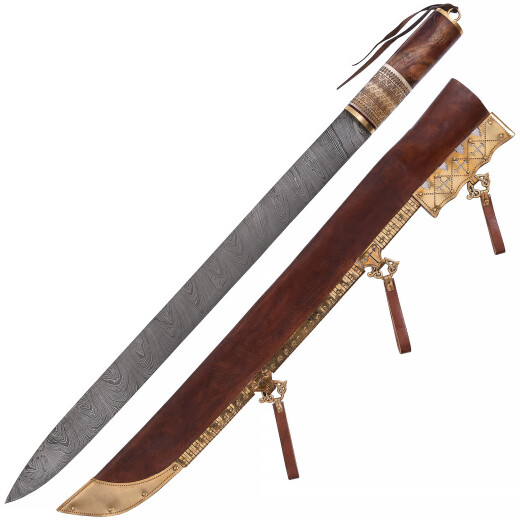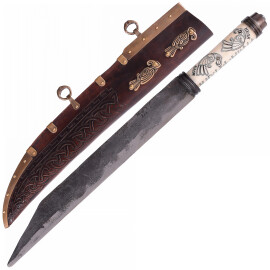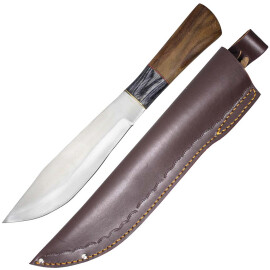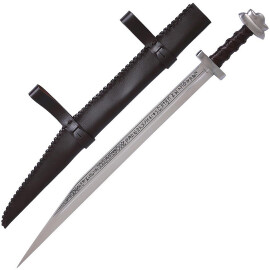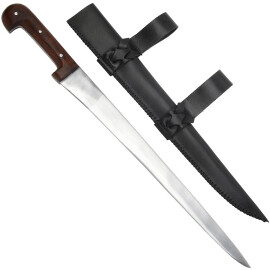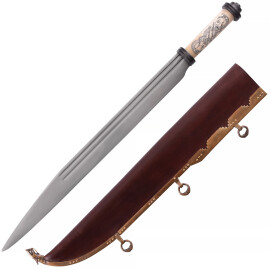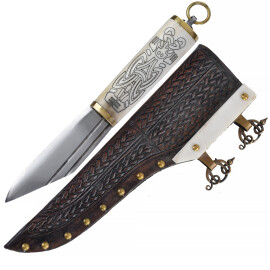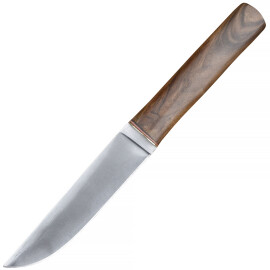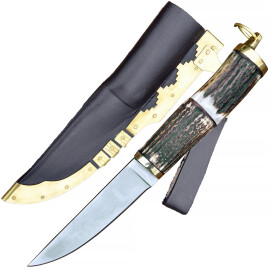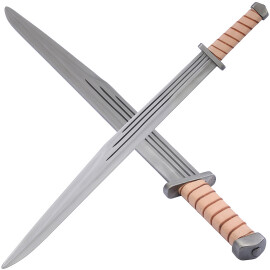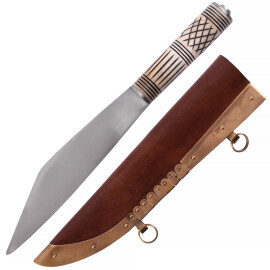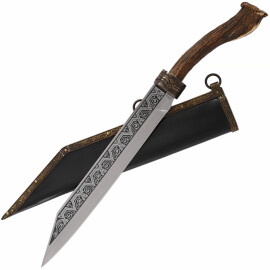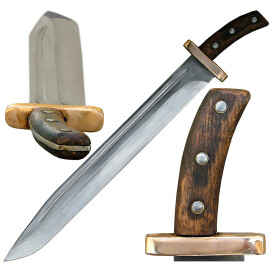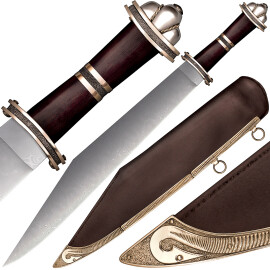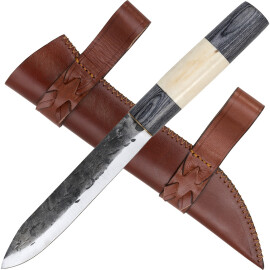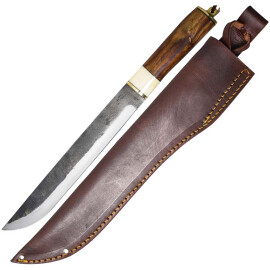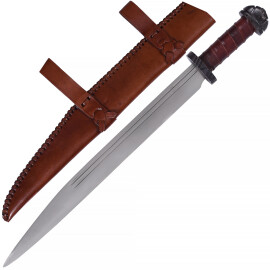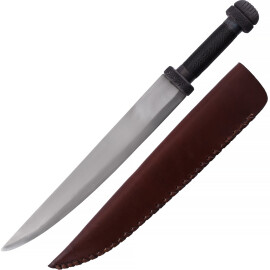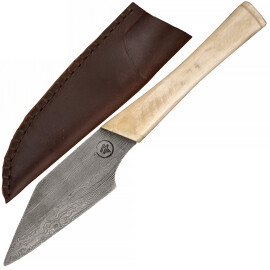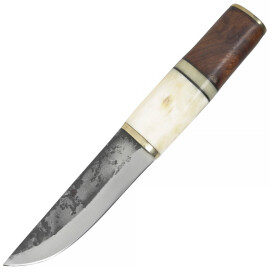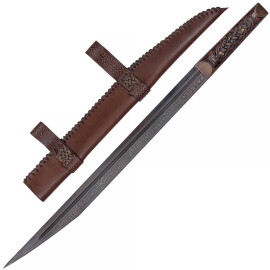Birka Long Seax, Viking Sax Knife with Damascus Steel Blade and Wood-and-Bone Handle
This Viking Age knife based on finds from Björkö/Birka (grave 944), Sweden, features a sharpened 256-layer Damascus steel* blade. The wood-and-bone handle has an oval cross-section for a solid grip on the knife and the brass butt cap is equipped with a convenient lanyard hole (leather lanyard is included in delivery). The bone section is adorned with intricate period details. As the knife is fully hand-made, these ornaments may slightly vary from piece to piece. Please also keep in mind that bone is a natural product and variations in bone colour and grain are quite common. Each Birka seax has thus its own very unique handle and above pictures are for reference only. More information...
Recommended offer
Birka Long Seax, Viking Sax Knife with Damascus Steel Blade and Wood-and-Bone Handle
The beautiful sheath is crafted from vegetable tanned, hand-dyed leather with period brass fittings. It is equipped with three stylized brass rings and leather belt loops for typical Viking-style horizontal carry. All details are also modeled on original finds from Birka.
Please note that, as the blade is sharp and fully functional, this scramasax is designed as a collector's or decoration piece and not suited for combat re-enactment!
*The terms Damascus steel, damascene or pattern welded designate a compound steel forged out of two or more different types of steel. It is named after its birthplace, the Syrian city of Damascus, a former stronghold of the patterned steel production. As a common practice, a harder high carbon steel and a milder low carbon steel are repeatedly forge welded and folded together. The high carbon steel ensures a higher hardness, a better temperability and longer lasting edge retention, whereas the milder steel confers greater blade flexibility and tensile strength. This procedure, which arose in a time where steel qualities were often low and inconsistent, enables to combine the positive attributes of the various steel grades. Besides, the different shadings generated by the varying carbon content of the alternating layers engender strikingly beautiful patterns, such as the twisted motif called Torsion Damascus pattern or the Rose Damascus pattern. Undoubtedly, these unusual patterns partly explain why inherent magical properties were attributed to the Damascus steel blades of the Middle Ages.
- Blade material: Damascus steel (4340 and 1070 steel, 256 layers), sharp edge
- Also available in a regular version with high carbon steel blade (Product no. 0364002551)
- Handle material: wood, animal bone, brass
- Overall length: approx. 60cm
- Blade length: approx. 47cm
- Weight: approx. 500 g (approx. 740 g with sheath)
- Vegetable tanned leather sheath with brass fittings and carrying loops
- Specs may slightly vary from piece to piece.
The Swedish company SPQR offers a wide range of historical replicas. SPQR stands for Senatus Populusque Romanus (Engl. The Senate an People of Rome) and is a fitting name for a company specialized in the reproduction of artefacts reaching from the Roman era to the Renaissance period. SPQR has committed itself to making high-quality re-enactment and battle-ready products available at affordable prices. The entire product line is made to historical specifications. Each piece is modeled on illustrations and photographs from historical books and museums, and SPQR works in close cooperation with a number of Viking and medieval re-enactment groups in Scandinavia, Germany and the UK to jointly develop the most authentic products possible.
Write to our specialist


